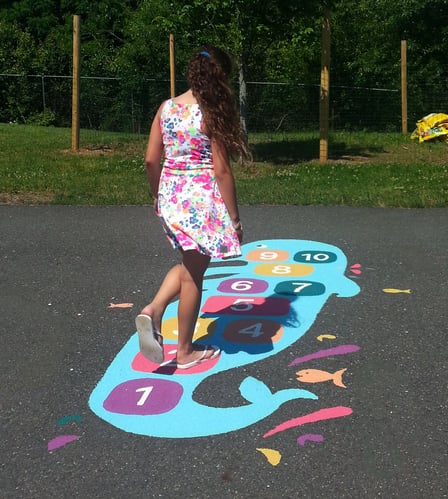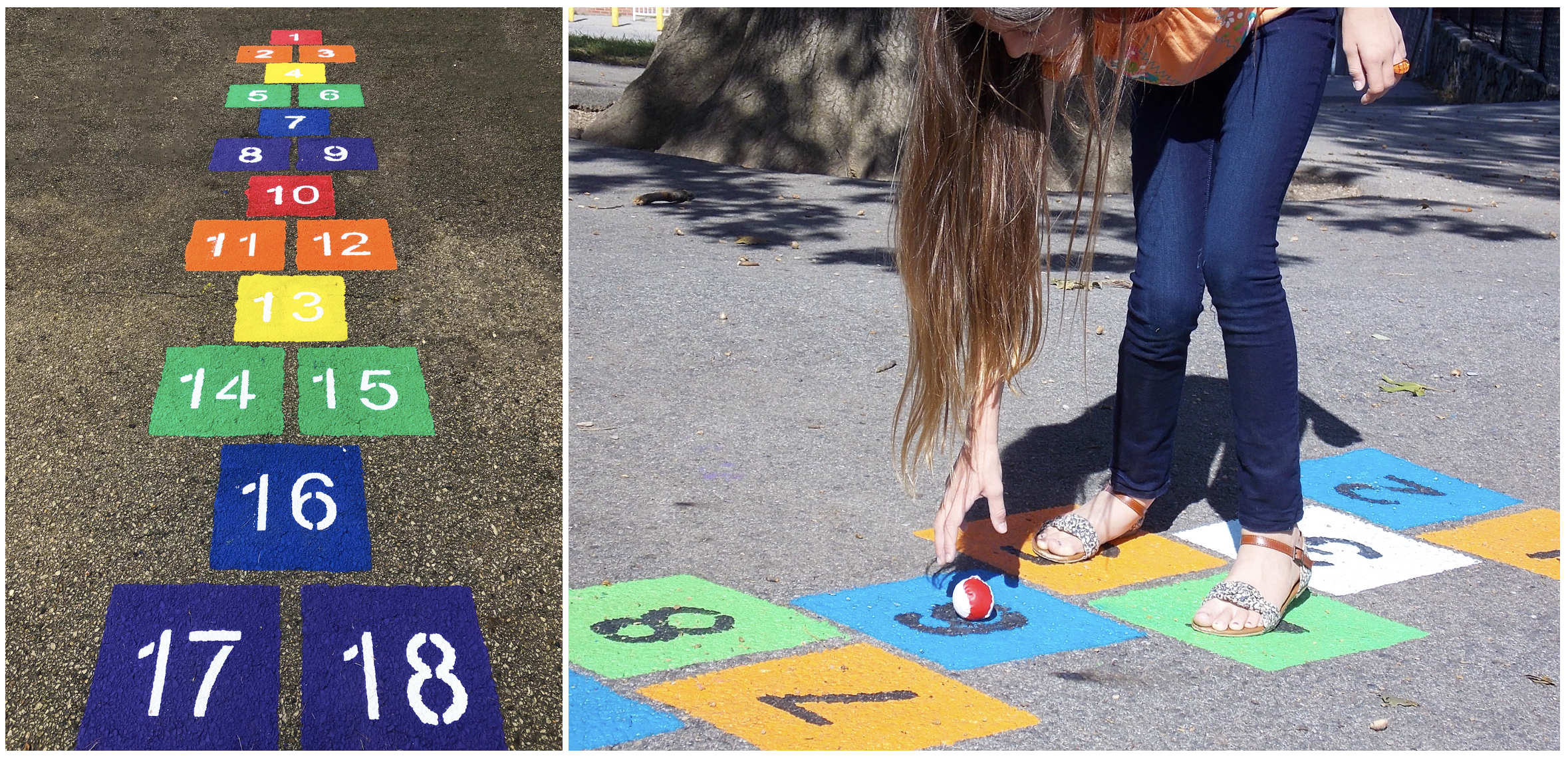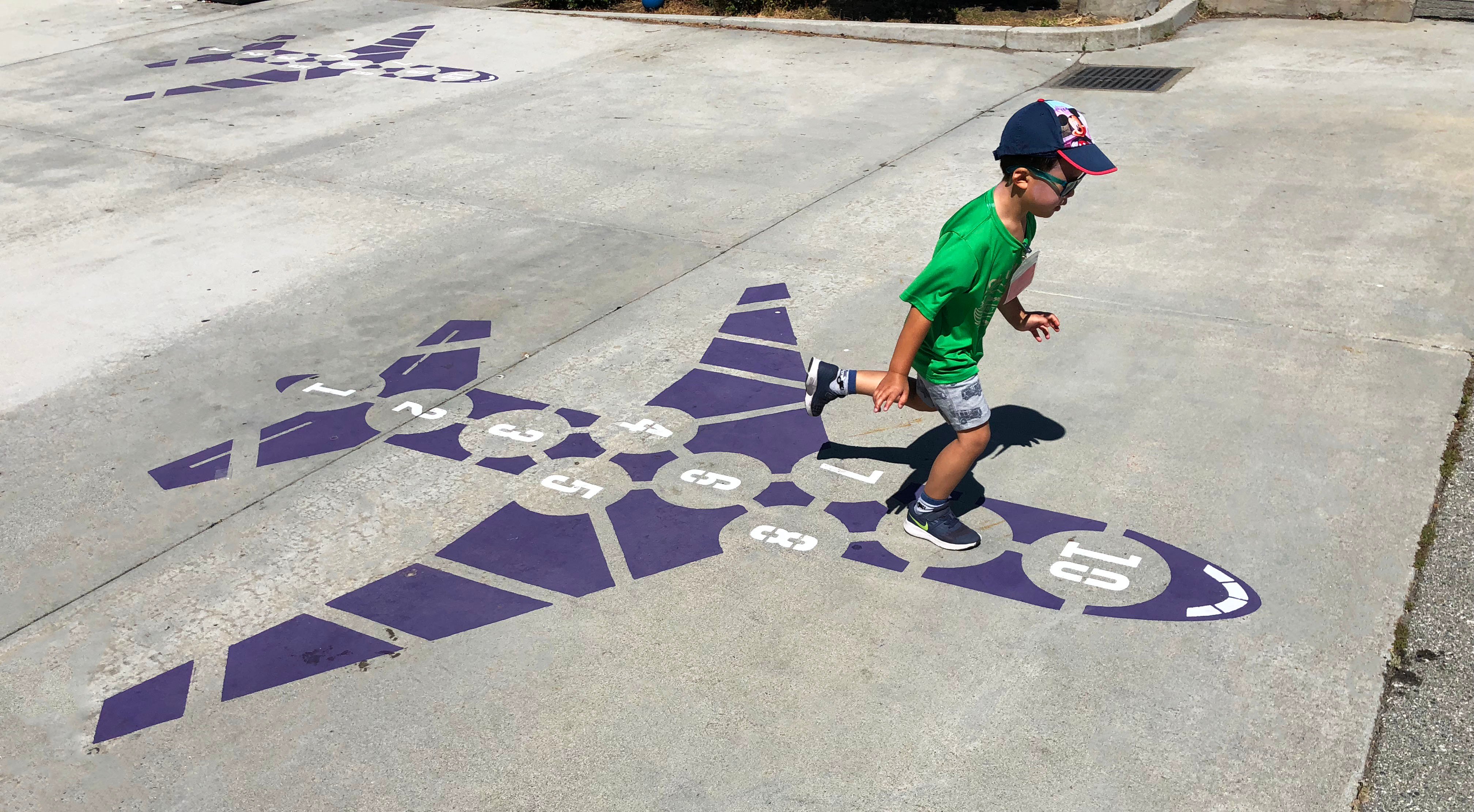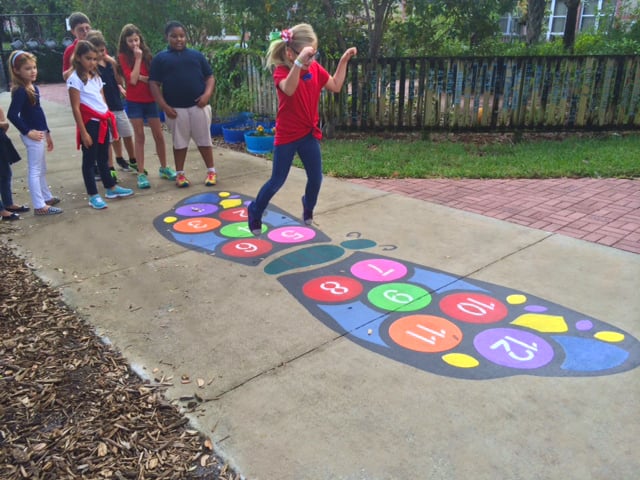How to Play Hopscotch!
(Updated March 29, 2025) Hopscotch is a timeless game that has been enjoyed by children and adults for generations. With its simple rules and endless possibilities for creativity, hopscotch offers not only fun but numerous benefits for physical and mental development.
Did you know that hopscotch has a rich history that dates back centuries?!
Versions of the origin of hopscotch can be traced to ancient Greece, where it was used as a fitness and agility activity for adults.
Over time, hopscotch has spread across different cultures, cultivated multiple variations and evolved into the game we know today.
Benefits of Playing Hopscotch:
Beyond the sheer fun of hopping and jumping, hopscotch offers various physical and mental benefits. We discuss how hopscotch helps improve balance, coordination, and gross motor skills in children. Additionally, we highlight its role in promoting cognitive development, problem-solving, and social interaction.
THE BASIC RULES!
How to Play Hopscotch:
- The Hopscotch Grid: Using a pre-made grid, or chalk/tape, draw a hopscotch grid on a flat surface like a sidewalk or pavement.
The grid consists of a series of numbered squares or rectangles arranged in a linear or spiral pattern. The traditional hopscotch grid has ten numbered squares, but you can adjust the size and complexity based on your preference.
- Determine the Playing Order: Decide who will go first. You can either choose by consensus, flip a coin, or use any other fair method to determine the order.
- Start from the Starting Line: Stand at the starting line, which is typically located at one end of the hopscotch grid.
- Hop Through the Squares: On your turn, hop on one foot into the first square of the grid, skipping the square where the marker or pebble is placed. Use your other foot to hop over the square with the marker.
- Continue Hopping: Hop on one foot in each subsequent square, maintaining your balance and coordination. If the hopscotch grid is arranged in a linear pattern, hop through each square in a forward direction. If it's arranged in a spiral or other pattern, follow the designated path.
- Turn Around: When you reach the end of the grid, turn around and hop back in the opposite direction. This time, when you reach the square with the marker, pick it up or jump over it.
- Side-by-Side Squares: If the hopscotch grid has side-by-side squares (typically the second-to-last square and the last square), land with both feet together in these squares. This allows you to maintain your balance and prepare for the next turn.
- Complete the Course: Continue hopping through the hopscotch grid, going back and forth, until you have successfully hopped through all the squares. Each player takes turns following these steps until everyone has completed the course.
- Marking Mistakes: If you lose your balance, stumble, or step on the lines of the squares, your turn is over, and the next player takes their turn.
- Pass the Marker: After completing the course once, pass the marker or pebble to the next player, and they will begin their turn. Continue playing in this manner until everyone has had multiple turns or until you decide to end the game.
After completing the course once, pass the marker or pebble to the next player, and they will begin their turn. Continue playing in this manner until everyone has had multiple turns or until you decide to end the game.
Fun Variations of Hopscotch:
While traditional hopscotch is enjoyable on its own, there are numerous variations that can add excitement and challenges to the game. The following presents different adaptations such as single-leg hopscotch, double hopscotch, and reverse hopscotch. Each variation brings a unique twist and allows players to explore different skills and strategies.
OH Yeah! I almost forgot …. Hopscotch …It’s not just for Kids!
While hopscotch is often seen as a children's game, it can also be enjoyed by adults as a nostalgic and active pastime. Adults have rediscovered hopscotch for fitness too! Benefits include exercise, stress relief, flexibility, and a way to tap into their inner child.
Here are a few hopscotch examples:
Traditional Hopscotch: This is the most common form of hopscotch, played on a grid of squares drawn on the ground. Players take turns hopping through the squares, starting from one foot and landing with both feet in the single square or the side-by-side squares.
Single-Leg Hopscotch: In this variation, players are required to hop on one leg throughout the entire game. It adds an extra challenge and requires more balance and coordination.
Double Hopscotch: Double hopscotch is played with two parallel hopscotch grids side by side. Players take turns hopping through both grids simultaneously. It can be played individually or with multiple players.
Reverse Hopscotch: In this version, the players start from the highest-numbered square and hop back towards the starting point. It adds a different twist to the game and requires players to think in reverse order.
Alphabet Hopscotch: Instead of numbers, each square is labeled with a letter of the alphabet. Players need to hop through the squares in alphabetical order, calling out the letter as they land in each square.
Color Hopscotch: Instead of numbers, different colored squares are used in this version. Players must hop on specific colors or patterns, following a predetermined set of rules. It can be based on primary colors, patterns, or a combination of both.
Long Jump Hopscotch: Instead of a traditional hopscotch grid, a long jump is added as one of the squares. Players take turns hopping through the squares and then perform a long jump to reach the final square.
Team Hopscotch: This version involves multiple players divided into teams. Each team takes turns sending one player at a time to complete the hopscotch course. The team with the highest score or fastest time wins.
Hopscotch is a such a fun and versatile game that can be adapted and modified to fit different locations, preferences, and ability levels. No matter how you make your Hopscotch game (e.g. stencils, chalk, paint, stickers, or drawn in the sand) the skills used to play this timeless game keep kids and adults engaged and most importantly moving!
Coach White is going to share some Hopscotch skill work with us!







Leave a comment